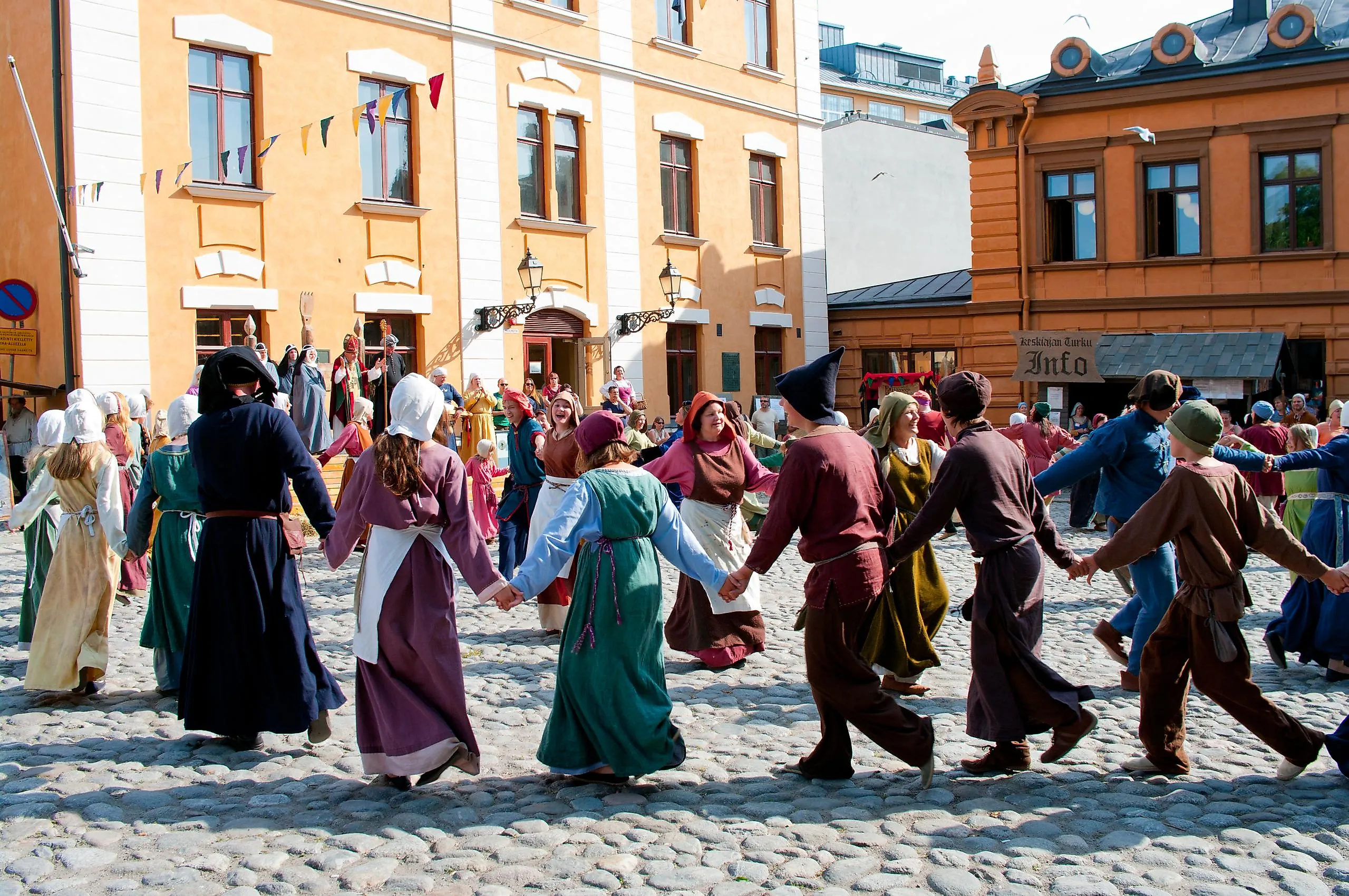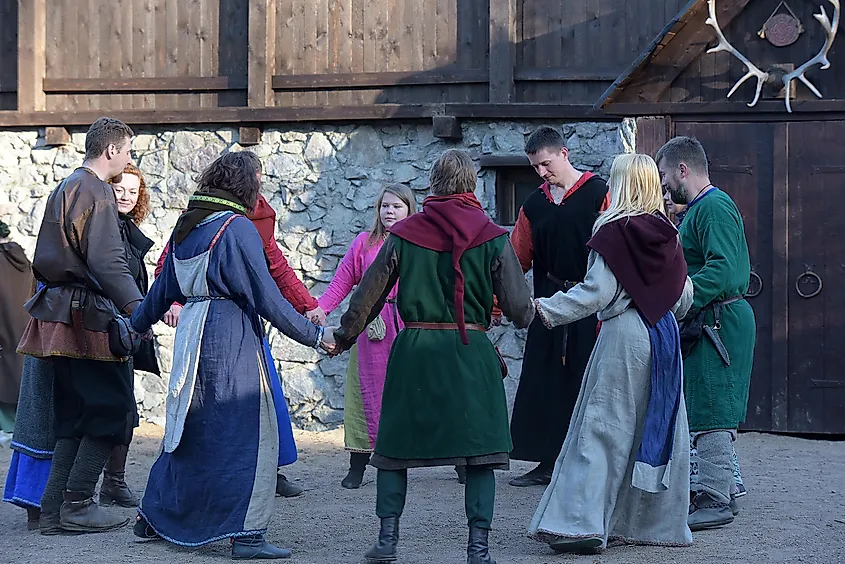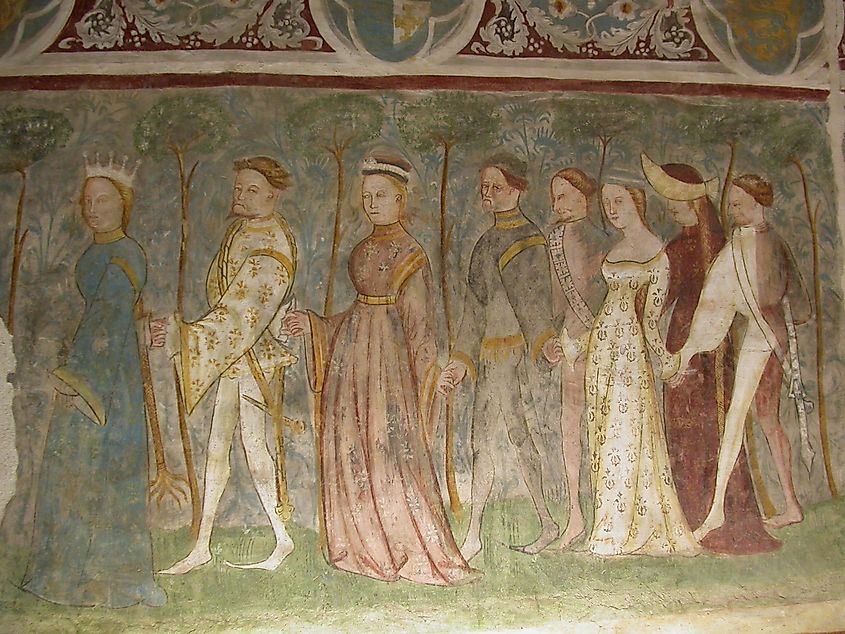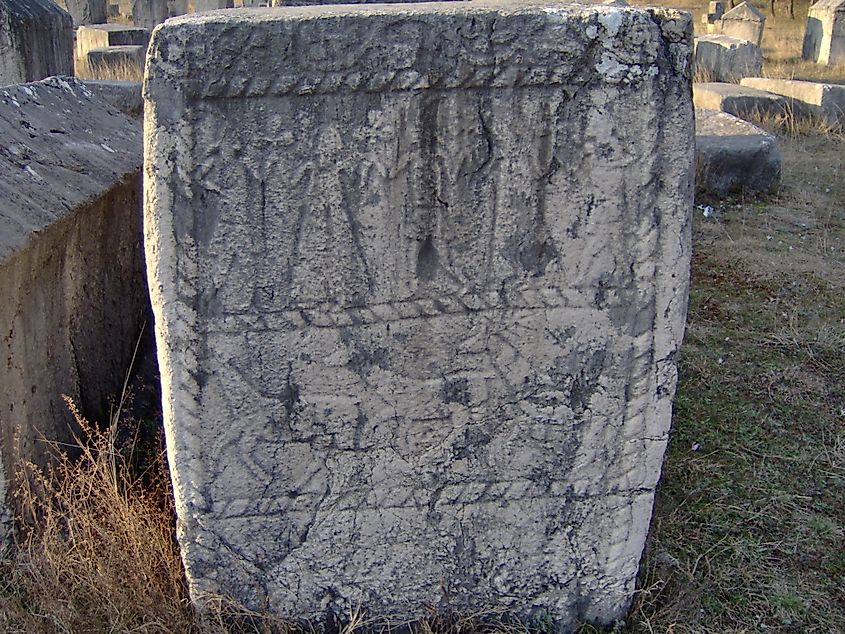
How Did Medieval People Dance?
Medieval Europe is not a time in European history that is remembered for its cultural advancements. If anything, it is a period of history that is thought of as backward, stagnant, and hostile to new ways of thinking. While this is certainly true to an extent, Medieval European culture was much more alive and colorful than is often portrayed in modern media. Many Western holidays, traditions, and dances trace back to Medieval Europe. As a matter of fact, dance played a surprisingly significant role in the cultural identities of countless European ethnic groups and nations.
Carole

The most popular form of dance during the 11th and 12th centuries in Medieval Europe was known as carole or carola. This dance style was common in rural and urban communities, including many members of the nobility.
Besides a handful of surviving records and artwork from this era, we do not know much about this dance style. That being said, what modern historians can agree upon at the bare minimum is that Carole was usually done by groups of participants interlocking their hands and forming a circle. Each circle would have a lead who would set the tone and pace in which the rest of the group danced.
Carole was usually done in large groups of people at community gatherings or feats, but it is also thought that this dance could also be conducted with just two partners. However, it is not clear how much the dance changed with just two participants.
England
The mention of Carole in England goes as far back as the year 1000 in the chronicles written by Saint Dunstan. Dunstan recalls walking into a church and finding several women holding each other's hands, singing hymns, and dancing in a circle. This raises the question of how Carole might have played a role in religion during this period, but things are still not too clear. If there is one aspect of life in Medieval Europe that is well documented, it is the intricacies of church proceedings.
It would be assumed that if this dance style was common in the church, it would have been mentioned in other records aside from just Saint Dunstan. While it is possible that Carole did play some role in the religious lives of certain worshippers, it would have most likely only existed in isolated instances and was certainly not something that the Vatican taught.
France And Central Europe

It is thought that Carole can trace its origins to Northern France. It is here that the mention of Carole is most frequent and was likely the most widespread. Plenty of instances mention French nobility and aristocrats taking part in this dance at large banquet halls and castle courts.
In Germany and other Central European nations, Carole was often referred to as Reigen. In the various German-speaking states, it appears as though many German Christians interwove dancing with their faith, something that church authorities looked down upon. There are records that date to the 8th century of local kings and church officials strictly banning any kind of dancing in churches or other holy buildings. It is most likely that the church, especially in Central Europe, saw this style of dancing as a form of paganism.
The Balkans

In modern times, this style of chain dancing is still most prominent in folk dances from the Balkans. While it has surely deviated from the source material over the centuries, there are still many similar aspects that Balkan folk dance has with Mediveal Carole dancing. In Bosnia and Herzegovina, Croatia, Serbia, and Montenegro, stone tablets can be found in the countryside that date back to the 12th century and depict a very similar style of dance common in Central and Northern Europe. Some historians think that Carole lived much longer in the Balkans than anywhere else in Europe. Even as Carole began to die out or heavily change in Western Europe, a much more traditional style was kept well preserved in places like Greece and Serbia in the 17th century.
Summary
Even though Mediviela Europe might have been a backward place by modern standards, it was much more colorful and alive than is often given credit. It is true that the authority of monarchs and priests was absolute, but this did not stop the everyday person from developing their own unique ways of dance and other cultural expressions. This kind of group dance can still be seen today in various traditional wedding dances from the Balkans and Eastern Europe and even in square dancing in the United States.











